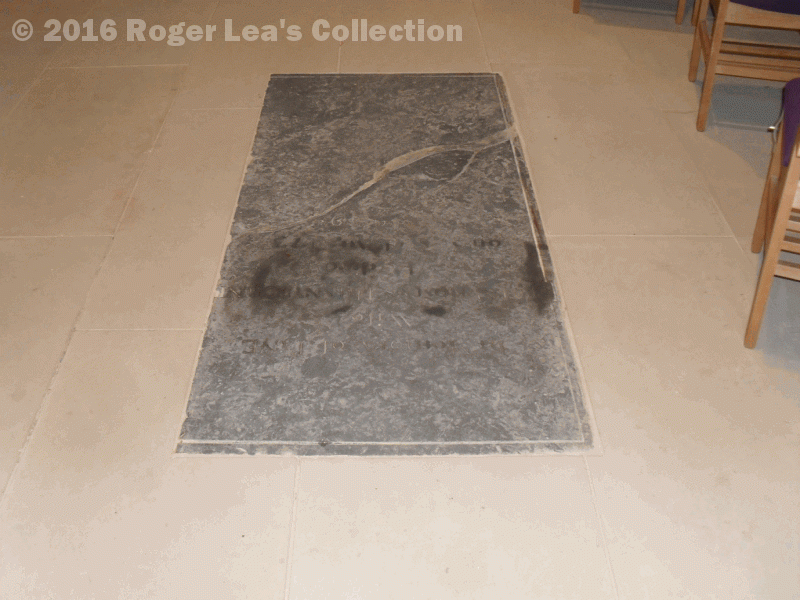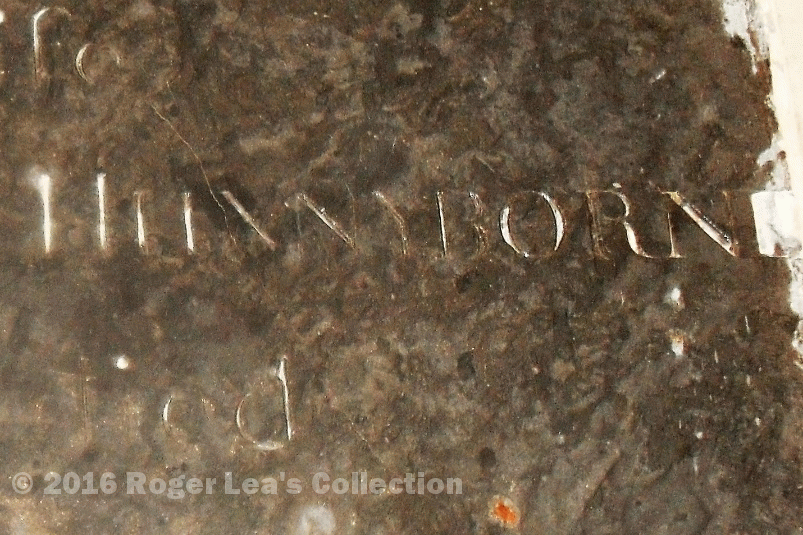Several families named Honeybourne lived in Sutton in the seventeenth century. There is some evidence that skilled weavers from the village of Honeybourne (near Evesham in Worcestershire) came to Sutton in the 1530s as part of Bishop Vesey’s plan to establish a cloth industry here, and the inference is that the seventeenth century Honeybourne families were descendants of these men. However, the Honeybourne surname does not appear in the surviving sixteenth century records, the first mention I have found is a burial, “There was buried the 28th January a child of James Hunnyburne named William (1610).”
James Hunyburne died in 1647, having made his will in January 1646. In his will he requires that his wife Elizabeth take care of three of his children, Elizabeth, James and Thomas, paying them their legacies when they come of age. He had lent money on bond to his neighbours Thomas James of Maney and Raphael Heath, the sums due to be given to his son Robert and granddaughter Mary, with small bequests to his other grown-up sons, Henry and John. These five sons could account for the five Honeybourne households listed in the Hearth Tax returns of the 1670s.
On James’s death an inventory was made of his goods and chattels by three of his neighbours - one of them was Christopher Veysey, who lived in Maney, so James’s house was probably near there. James was a husbandman with a small farm, making a reasonable living - among his goods were two pieces of wainscot and a warming pan - and able to lend money. The total value of his goods was £60/1/2d. In the Parish Register he is named as “ould James Hunniburne”, buried on August 25th 1647.
The parish registers for the seventeenth century record many Honeybourne events, variously spelt Honiborn , Honnyborn, Hunnyborn, Huniborne, Hunyburne, etc. On June 22nd 1699 “was buried James son of James Honnyborne shumaker of this towne”, and on June 20th 1702 another James was buried, “of Redway Cop Lane”. James the shoemaker made his will, dated 1707, in which he is named as “James Honyborne cordwainer” (a cordwainer was a shoemaker). He leaves most of his estate to “my trusty friend and loving neighbour Samuell Twamley” in trust for his daughter Mary Green and her family. Twamley was the miller at New Hall Mill, so perhaps James lived near there (NB you can visit New Hall Mill on Bank Holiday Monday). The inventory accompanying the will is very brief, the total value being £12/13/4d, “a little leather and a few old working tools in the (work)Shopp” were valued at thirteen shillings (65p), In the burial register he is named as “old James Honnyborne”.
“Thomas Honnyborne senior of this towne, 61 years old” was buried on 29th January 1705. He was probably the most prosperous of the Honeybournes, his son Thomas being elected Warden (equivalent to Mayor) of Sutton in 1720 and 1721. When he was Warden some of the squatters cottages on the extensive commons which surrounded Sutton were considered to be unfit and illegal, so Thomas Honeybourne started to evict the tenants of the worst cottages and pull them down, but he found to his cost that the cottagers could prove their right to live there, and his attempts failed. He was buried in the Parish Church in 1728, and the slab over his grave reads “Mr. Thomas Hunnyborn” (the honorific “Mr.” was reserved for the gentry).
No doubt it was this Warden Honeybourne after whom Honeyborne Road was named; by 1824 there were no Honeybourne households left in Sutton.

